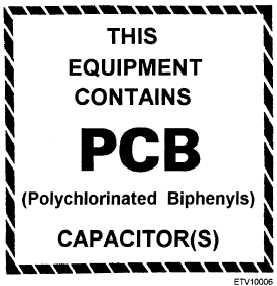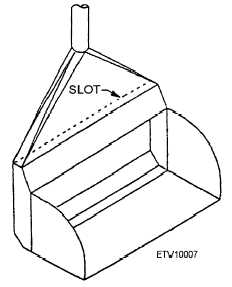7
8
Do Not store these containers in heated areas
where temperatures can exceed the
recommended storage temperature on their
labels. Aboard ship, all aerosols are considered
flammables and must be stored in a flammable
liquid storage compartment or cabinet.
Do Not discard these containers in wastebaskets
that will be emptied into an incinerator; they
could explode.
POLYCHLORINATED BIPHENYLS (PCBs)
Polychlorinated biphenyls (PCBs) are toxic
chemicals belonging to the chlorinated hydrocarbon
group of substances. They range in form and
appearance from oily liquids to crystalline solids and
hard transparent resins. These chemicals exhibit many
favorable physical and chemical properties, including
high heat capacity, chemical stability, noncorrosivity to
metals, low flammability, low vapor pressure, and low
electrical conductivity. They have, therefore, been used
extensively as insulators and coolants in electrical
equipment.
Any PCBs in use aboard ship will typically function
as insulating fluids or coolants within electrical
equipment. (The chemicals might occasionally be
found in totally-enclosed hydraulic and heat transfer
systems.)
Remember, these chemicals are toxic. That means
they can be harmful to your health or even deadly. Their
adverse effects can result from either brief or repeated
exposure. The effects from short-term contact with high
concentrations of PCB vapors or liquids include eye,
nose, and throat irritation, headaches, and a skin rash
known as chloracne. Repeated exposure can result in
severe skin irritation, respiratory irritation, digestive
tract damage, and damage to the liver. Systemic
intoxication, that is, an adverse effect to your entire
bodily system, can result from severe overexposure.
Systemic intoxication is indicated by nausea, vomiting,
weight loss, jaundice, and abdominal pain, and can be
fatal.
To protect all personnel, all equipment and cabinets
containing in-service small and large PCB capacitors
should be marked with the label shown in figure 2-3.
You can find additional information on PCBS in the
Shipboard Management Guide for Polychlorinated
Biphenyls (PCBs), NAVSEA S9593-A1-MAN-010.
Although we do not require that you read this
publication, we highly recommend that you do so.
BATTERIES
A battery consists of a group of cells that provide a
source of direct-current electrical power. Batteries are
used in automobiles, boats, aircraft, ships, submarines,
lighting equipment, and portable and stationary
electrical and electronic equipment. They can be used as
main power sources or as secondary or backup power
sources. Some batteries are rechargeable and some are
not.
Batteries can be dangerous. If used or handled
improperly, they can explode, release toxic gases, or
leak hazardous chemicals. This section gives you the
Figure 2-3.—Sample 4" x4" EPA-required label.
2-5




